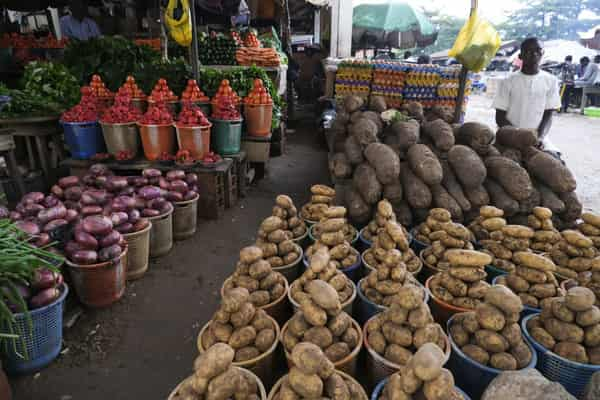
For many households in Nigeria, inflation is a mortal enemy. It eats deep into disposable income, depreciates spending power, forces lifestyle changes, and in some instances could lead to malnutrition, especially if it festers for too long.
The inflationary trend in Africa’s largest economy is not an isolated case. Global food prices were up by 5.5% as of September 2021. But they plunged for six consecutive months, declining to 4.4% as of September 2022, according to the Food and Agriculture Organisation.
FAO attributed the decline to the sharp fall in the international prices of vegetables and “moderate” decreases in those of meat, dairy products, and sugar.
But in Nigeria, headline and food inflation are raging bulls.
Latest figures from the National Bureau of Statistics put headline inflation at 20.77% in September, a 17-year high. Food inflation surged to 23.34% on a year-on-year basis, representing a 3.77% increase compared to 19.57% in September 2021.
NBS chalked down the increase to the rise in the prices of bread, cereals, yam, potatoes, oil, and fat. Curiously, the report did not mention the prices of rice, one of the most popular staple foods in Nigeria, the prices of which have risen sharply as the country continues to count the losses occasioned by floods that have ravaged more than two-thirds of its states.
Apart from the floods, other negative drivers such as insecurity, rising energy costs, the Ukraine-Russian war, and the depreciating value of the naira have been unkind to millions of people.
The biting reality of the inflationary trend is highlighted in the latest Jollof Index, an indicator published quarterly by SBM Intelligence, a Lagos-based socio-economic and intelligence research firm.

At the end of Q2 2022 in June, SBM put the average cost of preparing the dish at ₦9,220 when inflation stood at 18.6%. The cost rose to ₦9,917 at the end of Q3 in September, representing a 7.6% surge, rising with the country’s headline inflation.
“Across the 13 markets surveyed, Wuse II recorded the highest cost of making a pot of jollof rice at ₦13,150, while Onitsha had the cheapest price at ₦8,510,” the report said.
Apart from the surging prices of rice, SBM said protein costs are also surging.
The floods have had the most far-reaching impact on the prices of rice and are on course to cause a sharp decline in Nigeria’s production capacity. As of 2010, the country was producing 2.81 million metric tonnes of rice. This has risen gradually to 5.35 million metric tonnes in 2022 and may drop below 2020 figures in one year.
The immediate future is dire for many families. Latest government figures said more than 603 people have died, with 1.3 million displaced and 270,000 acres of farmland destroyed since August.
The estimated cost of the floods and how further up they could push inflation are not exactly clear yet, but some farmers are already counting their losses. A farmer told AFP that at least 60% of produce will be lost to the floods.
“It’s monumental. So many people are crying,” said Kabir Ibrahim, president of the All Farmers Association of Nigeria.
Per the SBM’s Jollof Index, the floods have destroyed $15 million worth of rice farms in Nasarawa state in north central Nigeria. SBM projected that a year’s worth of harvest may be lost to the floods.
“The rice harvest, which is expected for November-December 2022, has been cut off, and Nigerians have to wait till the next rice harvest season, which is August-September 2023 for the South and November-December for the North,’ the report said.
“This means that in about one year, domestic production of rice will reduce considerably.”
Already, both the Food and Agriculture Organisation and World Food Programme have warned that the country is “facing or projected to face starvation”.
Troubles hardly come singly. As inflation spikes, more people will go to bed hungry. And angry.
This article was first published by the writer on Medium






